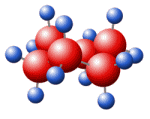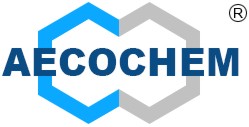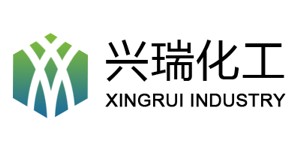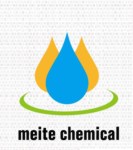|
|
|

|
Suppliers for
Decabromodiphenyl oxide
|
Properties | | CAS |
1163-19-5 | | Formula |
C12Br10O | | EINECS |
214-604-9 |

|
|
17 Registered suppliers
| Content of Br | 82-83%
| | Whiteness | 92%min
| | Volatile | 0.10%max
| | Particle size | 5um max
| | Free Br | 10ppm max
| | Melting point | 300-310℃ |
| Content of Br | 82-83%
| | Whiteness | 92%min
| | Volatile | 0.10%max
| | Particle size | 5um max
| | Free Br | 10ppm max
| | Melting point | 300-310℃ |
| Content of Br | 82-83%
| | Whiteness | 92%min
| | Volatile | 0.10%max
| | Particle size | 5um max
| | Free Br | 10ppm max
| | Melting point | 300-310℃ |
| Content of Br | 82-83%
| | Whiteness | 92%min
| | Volatile | 0.10%max
| | Particle size | 5um max
| | Free Br | 10ppm max
| | Melting point | 300-310℃ |
| Content of Br | 82-83%
| | Whiteness | 92%min
| | Volatile | 0.10%max
| | Particle size | 5um max
| | Free Br | 10ppm max
| | Melting point | 300-310℃ |
Molecular Formula: C12Br10O Molecular Weight: 959.17 Hazard Symbols: Xn,Xi,N,F UN Number: 3152 WGKGermany: 1 PackingGroup: II HS Code: 29093031
More details are to be found here
Molecular Formula: C12Br10O Molecular Weight: 959.17 Hazard Symbols: Xn,Xi,N,F UN Number: 3152 WGKGermany: 1 PackingGroup: II HS Code: 29093031
More details are to be found here
Molecular Formula: C12Br10O Molecular Weight: 959.17 Hazard Symbols: Xn,Xi,N,F UN Number: 3152 WGKGermany: 1 PackingGroup: II HS Code: 29093031
More details are to be found here
Molecular Formula: C12Br10O Molecular Weight: 959.17 Hazard Symbols: Xn,Xi,N,F UN Number: 3152 WGKGermany: 1 PackingGroup: II HS Code: 29093031
More details are to be found here
Molecular Formula: C12Br10O Molecular Weight: 959.17 Hazard Symbols: Xn,Xi,N,F UN Number: 3152 WGKGermany: 1 PackingGroup: II HS Code: 29093031
More details are to be found here
Molecular Formula: C12Br10O Molecular Weight: 959.17 Hazard Symbols: Xn,Xi,N,F UN Number: 3152 WGKGermany: 1 PackingGroup: II HS Code: 29093031
More details are to be found here
Molecular Formula: C12Br10O Molecular Weight: 959.17 Hazard Symbols: Xn,Xi,N,F UN Number: 3152 WGKGermany: 1 PackingGroup: II HS Code: 29093031
More details are to be found here
Melting point:> 300 ° C (lit.)
Boiling point: 425 ° C
Density :3 g / cm3
Flash point: -12 ° C
Storage conditions: 2-8 ° C
Water solubility: <0.1 g / 100 mL at 20 ēC
BRN :2188438
Stability:Stable. Incompatible with strong oxidizing agents.
Chemical properties: This product is white or light yellow powder. The melting range of 304 ~ 309 ° C. Almost insoluble in all solvents. Thermal stability. Heated to 354 ° C, weight loss of 5%. Non-toxic non-polluting flame retardant.
Bromine content ≥ (%) 82.5
Volatiles ≤ (%) 0.2
Whiteness ≥ 92
Average particle diameter (um) ≤ 5
Description:
This product is a broad-spectrum, high efficiency, additive flame retardant. With less added, flame retardant, high thermal stability characteristics. Widely used in rubber, textile, electronics, plastics and other industries, especially for PE, PP, ABS, PA6, PS, PBT, PC and other synthetic materials.
Usage:
1. This product is used in polyethylene, polypropylene, polybutylene terephthalate as flame retardant. Its physical and economic are better. The disadvantage is poor weather resistance.
2. Highly effective flame retardant additive for HIPS, ABS, LDPE, rubber, PBT and so has excellent flame-retardant effect, can also be used for nylon fiber and polyester-cotton fabrics
3. Decabromodiphenyl ether products are mainly used as additive flame retardant, containing large amount of bromine, good thermal stability, high flame-retardant performance, wide range of uses, suitable for polyethylene, polypropylene, ABS resin, epoxy resin, PBT resin, silicone rubber, EPDM rubber and polyester fiber, cotton fiber and other flame retardants.
4. Add flame retardant, wide range of uses. Can be used for polyethylene, polypropylene, ABS resin, polybutylene terephthalate, polyethylene terephthalate and silicone rubber, EPDM rubber products. The goods and antimony trioxide flame retardant and better, non-polluting flame retardant. The goods as a flame retardant in the physical and economic aspects are better. But its drawback is poor weather resistance, and will make the resin yellow. For high impact polystyrene in the amount of added 12% -15%.
Brief manufacture process:
Diphenyl ether in the halogenated catalyst (iron, etc.) in the presence of bromine reaction derived. Production methods can have two: 1. Solvent method Diphenyl ether dissolved in the solvent, adding catalyst, and then add bromine for reaction. Reaction completed, filtration, washing, drying, that was decabromodiphenyl ether. Commonly used solvents are dibromoethane, dichloroethane, dibromomethane, carbon tetrachloride, tetrachloroethane and so on. 2. Excessive bromination of bromine that is excessive bromine solvent as a method. The catalyst was dissolved in bromine and diphenyl ether was added dropwise to the bromine. After the reaction, excess bromine is distilled out, neutralized, filtered and dried to obtain finished product. Industrial products for the white powder, bromine content of 81-83%. Consumption of raw materials fixed: 180kg / t diphenyl ether, bromine (99.5%) 1400kg / t.
Melting point:> 300 ° C (lit.)
Boiling point: 425 ° C
Density :3 g / cm3
Flash point: -12 ° C
Storage conditions: 2-8 ° C
Water solubility: <0.1 g / 100 mL at 20 ēC
BRN :2188438
Stability:Stable. Incompatible with strong oxidizing agents.
Chemical properties: This product is white or light yellow powder. The melting range of 304 ~ 309 ° C. Almost insoluble in all solvents. Thermal stability. Heated to 354 ° C, weight loss of 5%. Non-toxic non-polluting flame retardant.
Bromine content ≥ (%) 82.5
Volatiles ≤ (%) 0.2
Whiteness ≥ 92
Average particle diameter (um) ≤ 5
Description:
This product is a broad-spectrum, high efficiency, additive flame retardant. With less added, flame retardant, high thermal stability characteristics. Widely used in rubber, textile, electronics, plastics and other industries, especially for PE, PP, ABS, PA6, PS, PBT, PC and other synthetic materials.
Usage:
1. This product is used in polyethylene, polypropylene, polybutylene terephthalate as flame retardant. Its physical and economic are better. The disadvantage is poor weather resistance.
2. Highly effective flame retardant additive for HIPS, ABS, LDPE, rubber, PBT and so has excellent flame-retardant effect, can also be used for nylon fiber and polyester-cotton fabrics
3. Decabromodiphenyl ether products are mainly used as additive flame retardant, containing large amount of bromine, good thermal stability, high flame-retardant performance, wide range of uses, suitable for polyethylene, polypropylene, ABS resin, epoxy resin, PBT resin, silicone rubber, EPDM rubber and polyester fiber, cotton fiber and other flame retardants.
4. Add flame retardant, wide range of uses. Can be used for polyethylene, polypropylene, ABS resin, polybutylene terephthalate, polyethylene terephthalate and silicone rubber, EPDM rubber products. The goods and antimony trioxide flame retardant and better, non-polluting flame retardant. The goods as a flame retardant in the physical and economic aspects are better. But its drawback is poor weather resistance, and will make the resin yellow. For high impact polystyrene in the amount of added 12% -15%.
Brief manufacture process:
Diphenyl ether in the halogenated catalyst (iron, etc.) in the presence of bromine reaction derived. Production methods can have two: 1. Solvent method Diphenyl ether dissolved in the solvent, adding catalyst, and then add bromine for reaction. Reaction completed, filtration, washing, drying, that was decabromodiphenyl ether. Commonly used solvents are dibromoethane, dichloroethane, dibromomethane, carbon tetrachloride, tetrachloroethane and so on. 2. Excessive bromination of bromine that is excessive bromine solvent as a method. The catalyst was dissolved in bromine and diphenyl ether was added dropwise to the bromine. After the reaction, excess bromine is distilled out, neutralized, filtered and dried to obtain finished product. Industrial products for the white powder, bromine content of 81-83%. Consumption of raw materials fixed: 180kg / t diphenyl ether, bromine (99.5%) 1400kg / t.
Melting point:> 300 ° C (lit.)
Boiling point: 425 ° C
Density :3 g / cm3
Flash point: -12 ° C
Storage conditions: 2-8 ° C
Water solubility: <0.1 g / 100 mL at 20 ēC
BRN :2188438
Stability:Stable. Incompatible with strong oxidizing agents.
Chemical properties: This product is white or light yellow powder. The melting range of 304 ~ 309 ° C. Almost insoluble in all solvents. Thermal stability. Heated to 354 ° C, weight loss of 5%. Non-toxic non-polluting flame retardant.
Bromine content ≥ (%) 82.5
Volatiles ≤ (%) 0.2
Whiteness ≥ 92
Average particle diameter (um) ≤ 5
Description:
This product is a broad-spectrum, high efficiency, additive flame retardant. With less added, flame retardant, high thermal stability characteristics. Widely used in rubber, textile, electronics, plastics and other industries, especially for PE, PP, ABS, PA6, PS, PBT, PC and other synthetic materials.
Usage:
1. This product is used in polyethylene, polypropylene, polybutylene terephthalate as flame retardant. Its physical and economic are better. The disadvantage is poor weather resistance.
2. Highly effective flame retardant additive for HIPS, ABS, LDPE, rubber, PBT and so has excellent flame-retardant effect, can also be used for nylon fiber and polyester-cotton fabrics
3. Decabromodiphenyl ether products are mainly used as additive flame retardant, containing large amount of bromine, good thermal stability, high flame-retardant performance, wide range of uses, suitable for polyethylene, polypropylene, ABS resin, epoxy resin, PBT resin, silicone rubber, EPDM rubber and polyester fiber, cotton fiber and other flame retardants.
4. Add flame retardant, wide range of uses. Can be used for polyethylene, polypropylene, ABS resin, polybutylene terephthalate, polyethylene terephthalate and silicone rubber, EPDM rubber products. The goods and antimony trioxide flame retardant and better, non-polluting flame retardant. The goods as a flame retardant in the physical and economic aspects are better. But its drawback is poor weather resistance, and will make the resin yellow. For high impact polystyrene in the amount of added 12% -15%.
Brief manufacture process:
Diphenyl ether in the halogenated catalyst (iron, etc.) in the presence of bromine reaction derived. Production methods can have two: 1. Solvent method Diphenyl ether dissolved in the solvent, adding catalyst, and then add bromine for reaction. Reaction completed, filtration, washing, drying, that was decabromodiphenyl ether. Commonly used solvents are dibromoethane, dichloroethane, dibromomethane, carbon tetrachloride, tetrachloroethane and so on. 2. Excessive bromination of bromine that is excessive bromine solvent as a method. The catalyst was dissolved in bromine and diphenyl ether was added dropwise to the bromine. After the reaction, excess bromine is distilled out, neutralized, filtered and dried to obtain finished product. Industrial products for the white powder, bromine content of 81-83%. Consumption of raw materials fixed: 180kg / t diphenyl ether, bromine (99.5%) 1400kg / t.
Melting point:> 300 ° C (lit.)
Boiling point: 425 ° C
Density :3 g / cm3
Flash point: -12 ° C
Storage conditions: 2-8 ° C
Water solubility: <0.1 g / 100 mL at 20 ēC
BRN :2188438
Stability:Stable. Incompatible with strong oxidizing agents.
Chemical properties: This product is white or light yellow powder. The melting range of 304 ~ 309 ° C. Almost insoluble in all solvents. Thermal stability. Heated to 354 ° C, weight loss of 5%. Non-toxic non-polluting flame retardant.
Bromine content ≥ (%) 82.5
Volatiles ≤ (%) 0.2
Whiteness ≥ 92
Average particle diameter (um) ≤ 5
Description:
This product is a broad-spectrum, high efficiency, additive flame retardant. With less added, flame retardant, high thermal stability characteristics. Widely used in rubber, textile, electronics, plastics and other industries, especially for PE, PP, ABS, PA6, PS, PBT, PC and other synthetic materials.
Usage:
1. This product is used in polyethylene, polypropylene, polybutylene terephthalate as flame retardant. Its physical and economic are better. The disadvantage is poor weather resistance.
2. Highly effective flame retardant additive for HIPS, ABS, LDPE, rubber, PBT and so has excellent flame-retardant effect, can also be used for nylon fiber and polyester-cotton fabrics
3. Decabromodiphenyl ether products are mainly used as additive flame retardant, containing large amount of bromine, good thermal stability, high flame-retardant performance, wide range of uses, suitable for polyethylene, polypropylene, ABS resin, epoxy resin, PBT resin, silicone rubber, EPDM rubber and polyester fiber, cotton fiber and other flame retardants.
4. Add flame retardant, wide range of uses. Can be used for polyethylene, polypropylene, ABS resin, polybutylene terephthalate, polyethylene terephthalate and silicone rubber, EPDM rubber products. The goods and antimony trioxide flame retardant and better, non-polluting flame retardant. The goods as a flame retardant in the physical and economic aspects are better. But its drawback is poor weather resistance, and will make the resin yellow. For high impact polystyrene in the amount of added 12% -15%.
Brief manufacture process:
Diphenyl ether in the halogenated catalyst (iron, etc.) in the presence of bromine reaction derived. Production methods can have two: 1. Solvent method Diphenyl ether dissolved in the solvent, adding catalyst, and then add bromine for reaction. Reaction completed, filtration, washing, drying, that was decabromodiphenyl ether. Commonly used solvents are dibromoethane, dichloroethane, dibromomethane, carbon tetrachloride, tetrachloroethane and so on. 2. Excessive bromination of bromine that is excessive bromine solvent as a method. The catalyst was dissolved in bromine and diphenyl ether was added dropwise to the bromine. After the reaction, excess bromine is distilled out, neutralized, filtered and dried to obtain finished product. Industrial products for the white powder, bromine content of 81-83%. Consumption of raw materials fixed: 180kg / t diphenyl ether, bromine (99.5%) 1400kg / t.
|
|
|
Privileged suppliers
Last update 2024-04-30
|



 details
details








